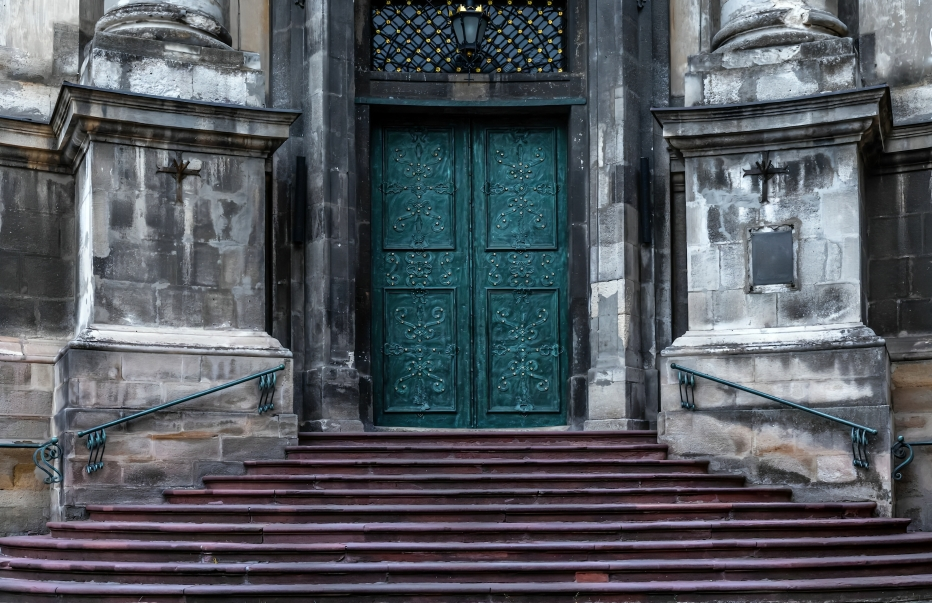Doors are an essential element in architecture that often goes unnoticed, yet they hold the power to transform our experience of space. Each door acts as a portal, not just between rooms, but across epochs of human history and cultural expression. Our exploration of architectural marvels centers on these fascinating fixtures, examining their evolution, design significance, and future in the world of architecture.
An Introduction to the Importance of Doors in Architecture and Design
The word “gateway” often conjures visions of opportunity and adventure, embodying the excitement of crossing from one realm into another. Architecturally, doors serve this function, acting as conduits between separate environments while providing security, style, and structure. They can surprise, delight, or command attention, anchoring a building’s design and offering the first taste of its internal character.
Throughout history, the door has never been a mere appendage but a crucial design element that reflects cultural ideals and technological advancements. This blog post takes a deep dive into the evolution and artistry of door design, offering insights into how these functional elements impact modern and historical architecture.
Historical Perspective: Evolution of Doors from Ancient to Modern Times
Since the dawn of architecture, doors have served as guardians of transition. Ancient Egyptian tombs featured ornate stone doors believed to protect the afterlife, while majestic gates in ancient Chinese and Greek architecture embodied the might of empires.
During the Renaissance, doors became canvases for artists, showcasing craftsmanship in wood and ironwork. The Baroque period then ushered in elaborate, ornate doors signaling opulence and stature. With the advent of industrialization, doors witnessed a transformation, blending new materials like steel and glass with functional, minimalist designs. This transition perfectly encapsulates modern architecture’s ethos of merging aesthetics with utility.
The Art of Door Design and Its Aesthetic Significance
At its core, door design is about striking a balance between form and function. Whether swinging, sliding, or revolving, doors invite creative exploration of materials, motifs, and mechanisms. Let’s examine the different types of doors and their unique contributions to architecture.
- Panel Doors: Known for their classic, symmetrical design, panel doors offer a solid and timeless appeal that fits both traditional and contemporary decor.
- Glass Doors: These allow natural light to pour into interiors, bridging indoor comfort with outdoor beauty. Frosted or stained glass introduces artistry and privacy.
- Pivot Doors: Elegance and innovation meet in pivot doors, which rotate on a central axis to create dramatic entryways.
- Sliding and Folding Doors: Efficiency and innovation culminate in these designs, often used to conserve space while providing flexible interior layouts, with garage doors like those in Boise.
Architectural Impact: How Doors Enhance a Building’s Design
A well-designed door does more than serve its practical purpose; it sets the stage for an architectural experience. Doors can enhance a building’s narrative, highlighting its cultural, functional, and aesthetic aspects.
- Storytelling Through Design: Grand doors often tell a building’s story before one steps inside. Consider the intricate carvings of a Gothic cathedral door, suggesting the celestial aspirations of the architecture.
- Framing Perspective: Doors also function as visual frames, focusing attention outward or inward, depending on spatial design.
- Creating Transitions: The threshold—a door’s space—plays a vital role in shifting the ambiance, from public hustle to private tranquillity.
Future Trends in Door Design in Architecture
While traditional craftsmanship retains its allure, door design is evolving alongside technological advancements. We anticipate growing trends such as smart technology, which allows doors to offer integrated security, automated opening, and customized lighting.
Similarly, sustainability will play an essential role. Future doors will increasingly feature recycled materials and energy-efficient designs, reflecting global initiatives toward sustainable development.
Looking Forward
Doors hold both symbolic and functional significance. They encapsulate the intersection of art, history, technology, and design. Their evolution continues to redefine how we experience architecture and interact with space.
Let’s Continue the Conversation
Doors are not just fixtures—they are a testament to human ingenuity. Have a door design that inspires you? Share your favorite examples on social media and engage with our growing community of architecture enthusiasts. The world of doors is as vast as it is varied, offering endless possibilities for exploration and appreciation.
Conclusion
Now that we’ve explored the history, artistry, and impact of door design in architecture, it’s clear that these functional elements are so much more than just a way to enter and exit a building. From ancient times to modern innovations, doors have evolved alongside cultural ideals and technological advancements.

